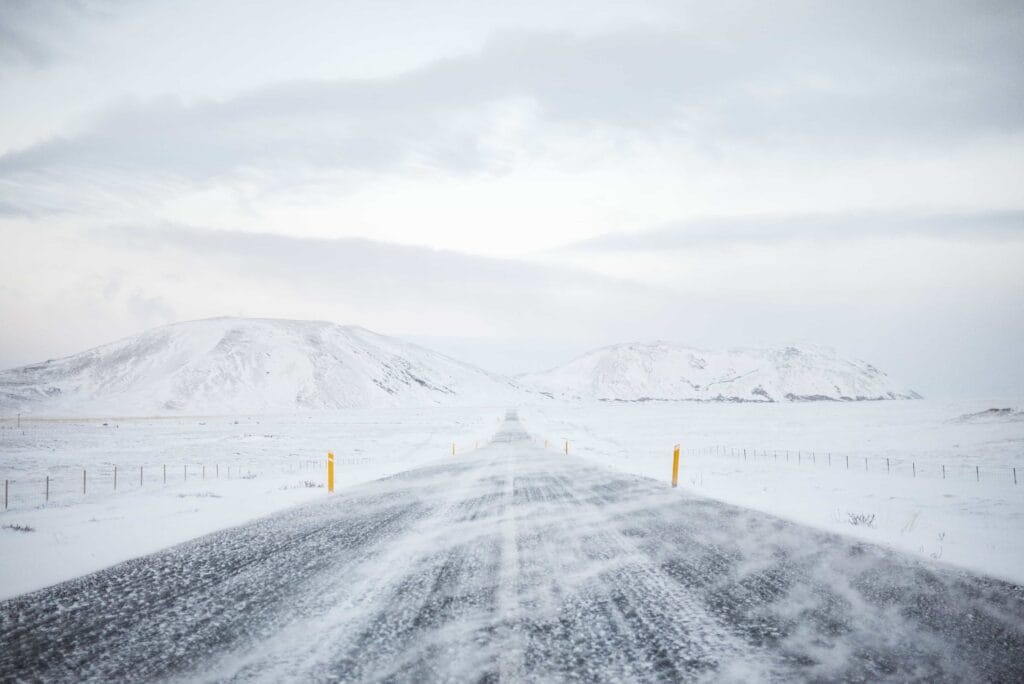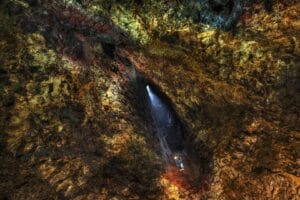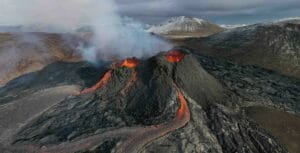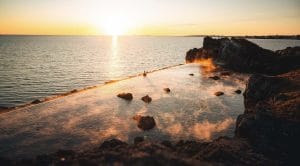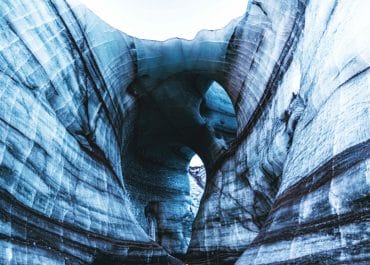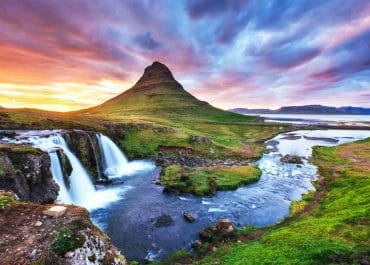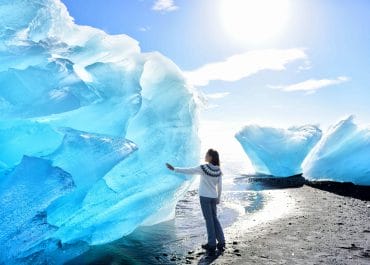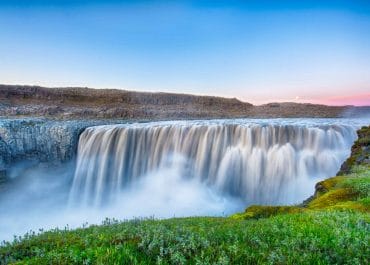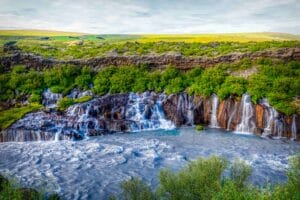If you are a winter person and love driving, then Iceland is the best destination to embrace both of these fantastic choices. Iceland looks stunning in the frozen landscapes and dazzling northern lights. The country offers some thrilling assortments that can best unfold in winters, which include relaxing in geothermal pools, barbeque near campsites, and mystical aurora borealis. For those who believe hiking and trekking is the only way to explore the country, then you must not have heard of driving through luscious mountains and eye-pleasing greenery.
Driving through Iceland can be your most memorable road trip ever. Winter in Iceland is known to be fierce, but they’re gorgeous. You can stop in the middle of your way to absorb the natural beauty amid snow and sometimes peeping sun. The visuals are magical yet exciting as you move further on your road trip. No doubt, driving can be very stressful in winters, and you need to be very attentive, but all your hard work pays off when you get surrounded by the best of nature.
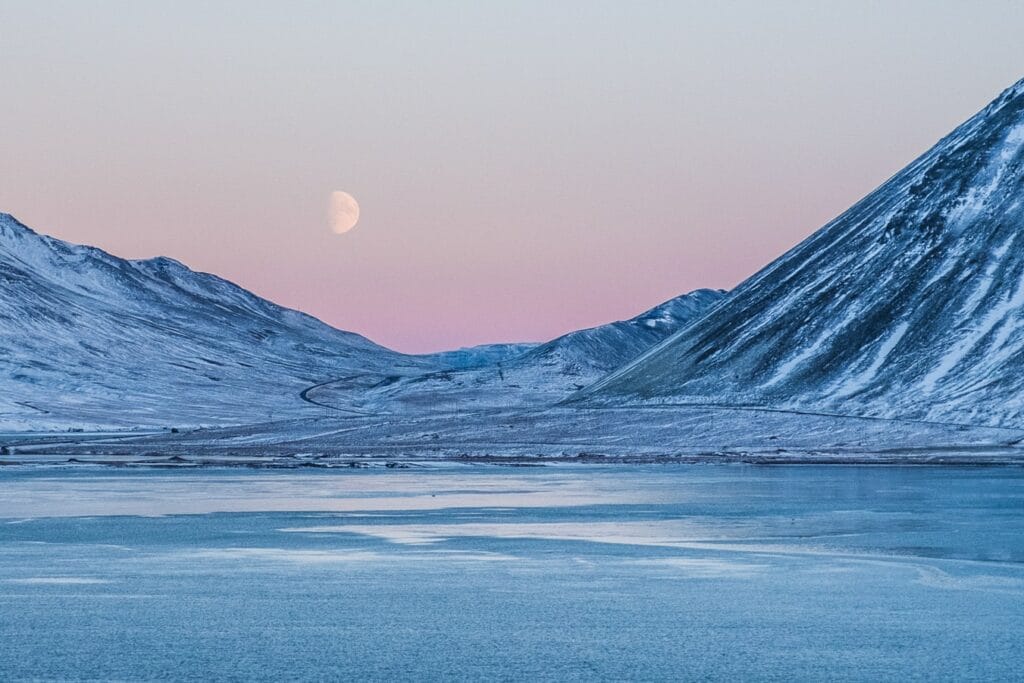
Sites that You Can Explore in Your Road Trip
Iceland never compromises on a magnificent sight; even in winter, the country offers some eye-appealing must-visit locations. Your road trip can be fascinating as you come across mountains covered with layers of snow surround the roads throughout. The best winter attractions in the country have to be southern Iceland and Reykjavik. The warm water from the Gulf Stream keeps the weather cozy in south Iceland. The area offers some best sites, including the Blue Lagoon and the Golden Circle along with breathtaking black sand beaches, waterfalls, and the Jökulsárlón glacier lagoon.
In western Iceland, Borgarnes and Snaefellsnes Peninsula areas are easily accessible throughout the winter. Stop by some great mountain sites to take advantage of the beautiful winter and also consider having some fun skiing, snowmobiling, and ice cave exploring around the area.
The eastern and northern parts of the country can also be a memorable experience. Traveling to these parts of Iceland requires planning because some of the places might not be accessible to you. Northern Iceland is a fantastic place to have some winter sports fun, offering places like thermal baths, fishing villages, solitude, and museums. The area serves some of the country’s best ski resorts, definitely worth giving a try.

Always Know Your Roads
It is imperative to know beforehand the condition of the roads you will be traveling to. The main roads in the country are well constructed and open throughout the winter. They make the drive easy in the area around coastal Iceland. The roads in the mountainous regions or the Highland roads can be a little tricky as they are often not well-maintained in comparison to the city ones. Most roads in the highlands are usually closed during the winter time.
You will come across various safety / warning signs that will guide you throughout your path. The road conditions differ over the winter as they are usually covered with snow blanket. Always listen to or check the forecast of the area you are driving, making sure what roads need to be taken. Remember that road closure are relatively normal in Iceland, mainly due to snowstorm in winters. The urban locations and town areas are generally cleared right after the storm, but it takes a little longer for secondary roads or the roads near the countryside to get cleared.
Always be prepared if these road closures last for hours and sometimes for days (even though that rarely happens). Another critical thing to consider before hitting the roads should be how good you can travel in snow and extreme weather conditions. When driving with family and kids, always have a backup driver who is comfortable with driving in snow. It is not just the snow and ice that one should look upon but also the strong winds. In extreme weather conditions, it is experienced that the wind is so dominant that it can swipe away even the most reliable thing.

Winter is a Lengthy Affair in Iceland - Which Month to Choose?
Winter in Iceland starts from mid-November and stretches to March and sometimes to April. It is a long season that has many layers to it. Don’t underestimate it to be just a white blanket as beneath that white sheet; you will find some of the best attractions. The Highland areas witness snow until the end of June, and it is normal to experience snow in May as well. The Iceland Road and Coastal administration release a map every year to inform travelers, hikers, explorers, and campers about the opening times for the road throughout the year. Choose the month considering the weather conditions before to avoid any unforeseeable circumstances. Watch out for weather forecast, if you’re planning to explore the country for more than two days then make sure you’ve checked the weather for all the days.
The Dilemma Between Car and Campervan
If you think gigantic RVs, trailer vans, or campervan can be the perfect option for your road trip to Iceland, then you’re slightly wrong because what matters is the quality of the tires. Even if you rent or own an SUV or a jeep, the only thing it requires is excellent quality winter tires. Another essential thing to keep in mind while renting a vehicle is to get expected insurances.
Always look for cars with sturdy winter studded tires. Renting a campervan can be a practical choice, but it comes along with greater responsibility. When driving in sloppy roads, like the ones in Iceland, the possibility of losing control is high. Also, camping and RVing is not a popular thing in winter because you will have less access to campsites, and the nights can get pretty cold. If you decide to go with a camper van, it is important that the camper has a good heating system.

Things to Keep in Mind – Your Ultimate Guide
Iceland offers satisfying and pleasing visuals that one can preserve for the rest of life. The beauty is so enchanting that no one can get over it in leaps of time. While driving amid nature’s lap, be very careful and cautious. The tips can help you plan your road trip to the winter wonderland of Iceland successfully.
- Carry a Road Map
A paper map is a handy thing that can help you in areas with no internet and mobile networks (even though there is internet connection almost everywhere in Iceland). Paper maps are the best use to check what road we’re driving to, is it a mountain road with a narrow passage or a road near a waterfall. They’re also helpful in navigating you through back-up routes.
We can also recommend e-maps that you can download to your phone. Those maps are often easier to use than the paper maps and will help you find all the best locations in the area.
- Keep a Check on Gas and Gas Station
There are enough gas stations in the remote areas of Iceland but always fill in the gas when you see a gas station. You wouldn’t want to take a risk on that amid the wilderness of the place. Many gas stations ask for self-service, so you better know how to fill in your gas. Always keep your gas tank full to avoid even the slightest possibility of gas shortage.
- Keep an eye on Daylight Hours
As winter has shorter days with light for a maximum of 6 hours, try to cover a longer distance in this period. The road conditions are dangerous in winter, and to avoid any unforeseeable circumstances, be prepared to drive for hours to get through the risky areas.
- Watch for Reindeers on East Coast
Reindeer in winters come back from the Highlands in search of food, which means you can often come across them in your drive. Maintain a steady speed so that you don’t harm them and yourselves in the winter wilderness.
- Carry the Necessary Equipment
Make sure you carry all the necessary tools required on your drive. From screwdriver to hammer to knife to machetes, take every possible tool and equipment to be well prepared for every situation. You can’t predict what your car can demand in between your adventurous voyage.
- Emergency Kit
The first-aid kit or the emergency kit should be the essential item in our travel vehicle. Do not forget to carry along essential medicines and emergency response equipment. In case of serious injury call on 112 for help, you can also download the official SafeTravel app, which determines your location all the time.
- Learn How to Change a Tire
When driving across Iceland, you never know what can follow, so be prepared in case of an emergency. Changing a tire is a tough job; it requires strength and patience, especially changing a winter tire is like a complete workout. Be prepared for any such situations. Most rental cars come with all the necessary equipment needed to change the tire.
- Prior Accommodation Booking
Though winter is not the busiest season for tourism in Iceland, makes sure you make all the bookings in advance. Know where you can stay, at what price and what facilities you will get. No one wants to have cold water running in their shower in chilly winters, so booking in advance can help reduce some level of stress.
- Carry Food and Water
Another very important element of a road trip – Food! Make sure you’ve got enough food for everyone in the car. Carry small packets of food rich in energy and proteins. Try to carry sugar pouches as they’re great energy boosters in winter. Frozen meats, chocolates, nuts, dry fruits, vegetables, and fruits can be your go-to options.
- Drive Responsibly
Try to drive defensively in Iceland. Always stay alert and assume that you’re driving along with others. Mind gap while driving narrowly and still stay relaxed and calm. Do not experiment with your driving in Iceland. Keep a safe distance from others!
- Don’t Forget Your Camera
What is the point of traveling to an incredibly beautiful place when you forget to carry your camera? Make sure the camera is on the top of your carry along with the items list. In case you want stable shots, carry with yourself a small gambit or tripod. If you’re a true adventure junkie and love shooting nature, then you can definitely use a drone camera to take some fantastic aerial shots. Winter time is the perfect time to capture the northern lights in Iceland. Read this article about northern lights photography before you arrive to Iceland to make sure you are ready to capture this beautiful phenomena dancing above the skies.
- Winter Clothes
Do not underestimate the winter for its luring beauty as they can be extremely cold. In some places, the temperature is recorded to be below-average temperature. Carry along with your winter jackets, warmers, heating pad, winter boots, and accessories like mufflers, scarfs, mittens, and socks. The nights are more relaxed than you can imagine, so don’t forget to carry along your coziest blanket. Click here for a more detailed winter packing list.
- Battery Backups
In a cold climate, batteries lose their charger quicker than usual, so make sure you have portable chargers, power banks, and backup batteries. Try to keep a spare battery in a warm place, like a pocket of your jacket or coat. Your car also loses battery very quickly, so in case you have a car battery charger carry that as well.
- Have Some Spare Time
Always have a flexible schedule because you’re traveling in winter, and no one can predict the weather in that season. Just have some extra time in your itinerary to accommodate real-time changes.

Safety Should Come First
Be aware of your surroundings and stay focus while driving to magnificent Iceland. The possible threat on your way will be the unpredictable winter weather. Always have a backup plan while driving through the wondrous valleys. The real-time weather can determine the success or failure of your road trip. Keep a check on the weather forecast to determine the best time of your road trip. The other possible threat could be snowy and sloppy roads, even though the roads are usually cleared up few hours after a big snowfall. Be aware of secondary ways and use road maps for back-up routes.
Driving in Iceland is one great experience that offers you a thrilling memory throughout your lifetime. Winters add a cherry to the top of an exciting expedition. Let yourself loose to absorb the greatness of nature amid melodious waterfalls, white snow, clear sky, sun-kissed mountains, and warm breezes. Experiencing the enthralling sight of the country is a once in a lifetime moment that everyone would love to live despite critical threats. You can never get enough of Iceland, its beauty, mystical aura, and eye-captivating landscape.
